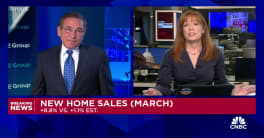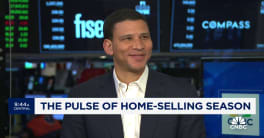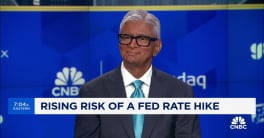Existing home sales rose 5.9 percent in November to a seasonally adjusted annual rate of 5.04 units compared to a rate of 4.76 units in October. October's rate was a downward revision from the 4.79 million originally reported. November's sales were up 14.5 percent from the 4.40 million unit sales pace in November 2011 and were the highest since November 2009 when the rate of sales reached 5.44 million. Data on existing home sales, which are completed transactions including single-family homes, townhomes, condominiums and co-ops, was released this morning by the National Association of Realtors® (NAR).
Single-family home sales were at a seasonally adjusted annual rate of 4.44 million compared to 4.21 million in October, an increase of 5.5 percent, and are 12.4 percent higher than in November 2011. Condominium and co-op sales were up 9.1 percent to an annual rate of 600,000 in November, an increase of 50,000 month-over month and 33.3 percent higher than the 450,000 unit pace of sales a year earlier.
Lawrence Yun, NAR chief economist, said there is healthy market demand. "Momentum continues to build in the housing market from growing jobs and a bursting out of household formation," he said. "With lower rental vacancy rates and rising rents, combined with still historically favorable affordability conditions, more people are buying homes. Areas impacted by Hurricane Sandy show storm-related disruptions but overall activity in the Northeast is up, offset by gains in unaffected areas."
The median price of an existing home rose $180,000 in November from the median price one year earlier becoming the ninth consecutive month in which annual prices rose. The median price for a single family home was $180,600, 10.1 percent higher than in November 2011 and the median existing condo price was $181,000 representing a 10.6 percent annual increase.
The median existing single-family home price was $180,600 in November, up 10.1 percent from a year ago. The median existing condo price was $181,000, 10.6 percent higher than in November 2011.
Foreclosures accounted for 12 percent of home sales and short sales for 10 percent. The two types of distressed sales together had a 24 percent market share in October and a 29 percent share in November 2011. Foreclosures sold for an average discount of 20 percent below market value while short sales were discounted 16 percent. Yun is projecting that the market share of distressed properties will fall into the teens next year as the numbers of seriously delinquent mortgages dwindle.
NAR President Gary Thomas said there's been speculation of a rise in short sales before the end of the year with pending expiration of the Mortgage Forgiveness Debt Relief Act. "However, there's been no movement in short sales, their market share is staying in a narrow range, and they're still taking much longer to sell - typically three months," he said.
"The fact remains it is extremely difficult to expedite a short sale, and banks' response to client urgency is only starting to improve," Thomas said. "However, we're hopeful that the act will be extended before it expires on December 31 so sellers don't have to pay taxes on forgiven mortgage debt, which would be unfairly treated as income for owners who are selling under duress."
Total housing inventory at the end of November fell 3.8 percent to 2.03 million existing homes available for sale, a 4.8-month supply at the current sales pace. This is the lowest inventory since September of 2005 when it was 4.6 months. In October the inventory was 5.3 months and in November 2011 there was a 7.1-month supply.
The median time on market for all homes was 70 days in November, slightly below 71 days in October, but is 28.6 percent below 98 days in November 2011. Thirty-two percent of homes sold in November were on the market for less than a month, while 20 percent were on the market for six months or longer; these findings are unchanged from October.
First-time buyers accounted for 30 percent of purchases in November, down from 31 percent in October and 35 percent in November 2011 and investors accounted for 19 percent compared to 20 percent in October.
Existing-home sales in the Northeast rose 6.9 percent to an annual rate of 620,000 in November and are 14.8 percent above November 2011. The median price in the Northeast was $232,900, down 2.0 percent from a year ago.
In the Midwest existing home sales increased 7.2 percent to a pace of 1.19 million and are 21.4 percent higher than a year ago. The median price in the Midwest was $141,600, 7.0 percent above November 2011.
Existing-home sales in the Southern region were up 7.9 percent to 2.04 million in November and are 17.2 percent above November 2011. The median price in the South was $157,400, up 10.5 percent from a year ago.
Ongoing inventory constraints held back sales in the West to an increase of 0.8 percent in November over October and a 4.4 percent increase since the previous November. Sales were at a pace of 1.19 million. Those same constraints have driven the median price in the region to $248,300, a 23.9 percent annual increase.







